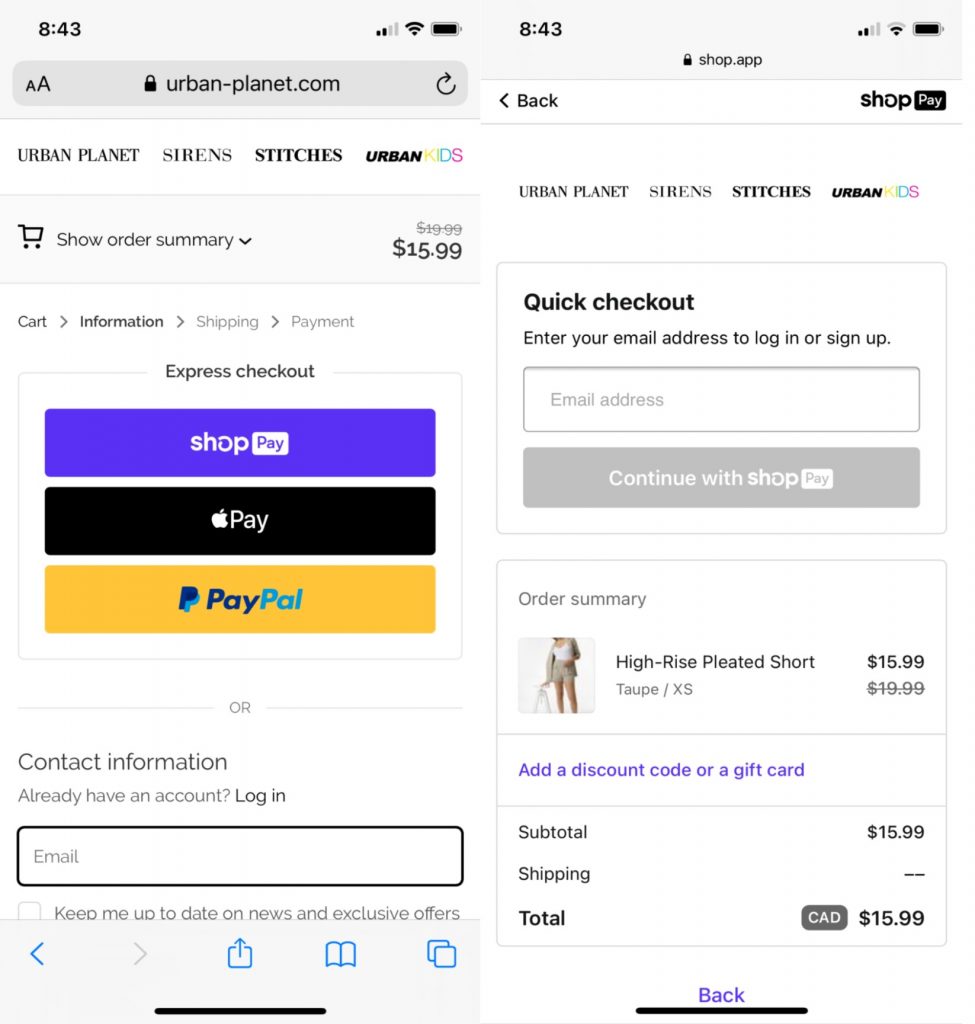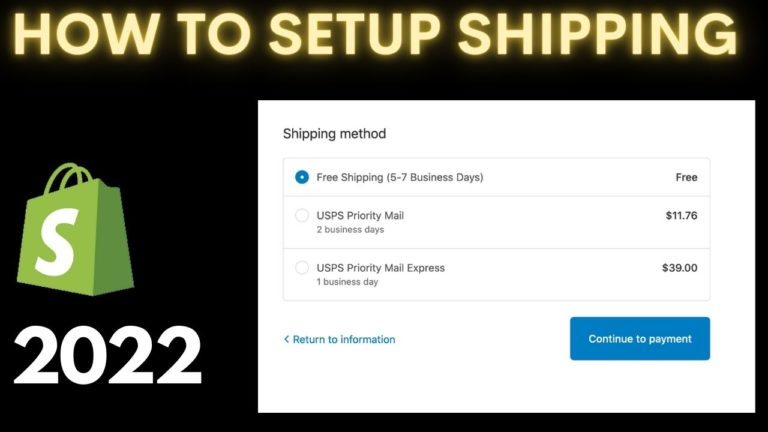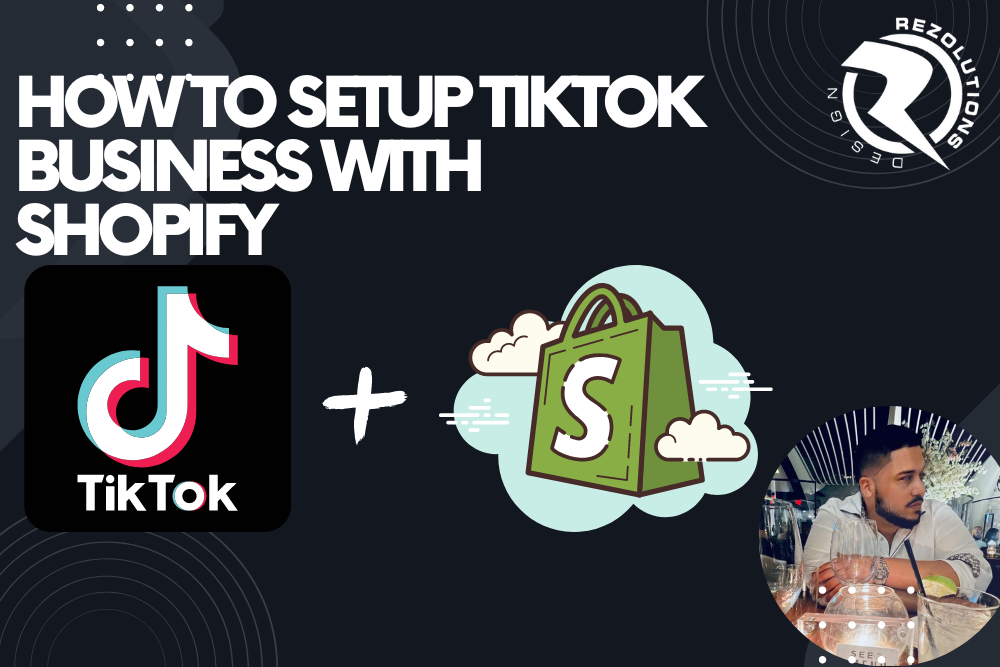Magento merchants continue to migrate their eCommerce businesses to Shopify Plus, and for good reason. Several benefits are spurring this mass migration, but there are a few key considerations to make before upgrading your online retail strategy.
- Advantages to migrating from Magento
- Reasons to migrate to Shopify Plus
- Compare the native features: Shopify Plus vs. Magento
- Examine any current contractual obligations
- Choose an experienced Shopify Plus partner
Why Migrate From Magento?
There are several advantages to using both Magento and Shopify Plus. However, many brands are abandoning Magento and switching to Shopify Plus. Developments in recent years have made it the ideal platform for scalable growth.
Magento 1: End-Of-Life
From its initial release in March 2008, Magento 1 (M1) was one of the most popular eCommerce platforms on the market. While the program wasn’t without issue, there was plenty of anticipation for the new and improved Magento 2 (M2).
After an unstable initial release, developments to the M2 software meant that issues were quickly resolved. However, migration from M1 to M2 is still far from simple and can be very expensive.
As of June 2020, M1 is officially obsolete. Adobe ended support for the Magento Commerce and Open Source platforms. Although it has been possible to continue operating on M1, ongoing support, security patches, and quality fixes are no longer available. This means that brands using the platform are vulnerable to security breaches and non-compliance.
Since the Magento 1 end-of-life, businesses using this platform have had to choose between 1 of 3 options: to continue using M1 at significant risk, migrate to a new platform such as Shopify Plus, or complete a costly store upgrade to M2.
Magento 2: Not a Complete Solution
Although Magento 2 is a comprehensive platform, especially in terms of depth and functionality, it has a slow launch time and a high total cost of ownership (TCO). Organizations that can afford the expensive and complex upgrades, as well as the hefty running costs, may opt for Magento. However, platforms such as Shopify Plus offer faster and more affordable solutions.

Why Migrate to Shopify Plus?
Since its launch in 2014, Shopify Plus has been growing rapidly. There are now over 5,300 businesses using Shopify Plus, with merchants generating $1 million to $500 million in sales. On average, there’s a 126% year-over-year (YOY) growth for merchants. These are just a few of the statistics enticing eCommerce businesses to migrate from Magento to Shopify Plus.
As Shopify Plus is designed to withstand the traffic, volume, and velocity of the world’s largest brands, it’s proved particularly effective for high-growth eCommerce businesses. Here’s a look at some of the main reasons for this:
Faster Launch Time
Shopify Plus boasts an astonishing 3-month launch time. Other platforms, such as Magento 2, can take between 6-12 months for migration.
Lower Ownership Cost
The total cost of ownership (TOC) for Shopify Plus is 50% less than Magento over a 3-year period. For businesses looking to save money, Shopify Plus holds a definite advantage.
Secure Checkout
Shopify Plus is PCI-compliant, meaning companies that use it can process, store, or transmit credit card information securely. It also utilizes a 3-D Secure checkout, making sure users are automatically compliant with PSD2 Strong Customer Authentication (SCA).
Less Patching Than Magento
Unfortunately, with such an extensive system, a lot of time and money can be spent on patching and security upgrades. In contrast, Shopify Plus clients benefit from full encryption across their website, using SSL.
Developed for Integration
Shopify Plus has an ecosystem with pre-built integrations, allowing users to quickly plug it into their existing tech stack. Powerful application programming interface (APIs) enables users to integrate essential business systems and tools already in use. Enterprise resource planning (ERP), product information management (PIM), and customer relationship management (CRM) integrations are made much simpler.
Shopify Plus is Fully Scalable
Scalability is one of the biggest advantages of using Shopify Plus. Although it is ideally suited to smaller businesses, the platform is designed for larger organizations, ensuring adequate scaling opportunities for developing eCommerce businesses. From handling large traffic volumes to integrating complex software, Shopify Plus scales with your business without issue.
10,000 Checkouts Per Minute
Peak trading periods should create excitement for businesses, not cause problems and stress. Shopify Plus is capable of handling extremely high volumes of traffic.
Say Goodbye to Server Congestion
With alternative platforms, it’s often necessary to scale infrastructure ahead of busy periods, like Black Friday. With Shopify Plus, you can avoid this hassle as it automatically adjusts to meet your needs.
99.9% Uptime
Your website going down is detrimental to your business. Shopify Plus deploys an excellent engineering team that works 24/7 to ensure a website remains fully functional, especially when you need it the most.
The Optimal Application Ecosystem
From payments to shipping to search and reviews, Shopify Plus delivers an extensive range of world-class technology partners, all accessible with the click of a button.
Ease of Use
Magento is often criticized for being clunky and hard to use as it is so comprehensive. Shopify Plus is a more intuitive, user-friendly interface, ensuring you and your employees pick it up quickly.
Design Flexibility
Shopify Plus allows businesses to set themselves apart from the competition through a fully customizable storefront. You can tailor the design and build to the exact needs of your business, establishing a memorable brand that drives your growth forward.
Automation Capabilities
Shopify Plus helps your team increase time and cost-effectiveness through advanced automation tools. For example, Shopify Flow is used to develop automated workflows on your online stores and applications. The program has built-in easy-to-use templates and follows a trigger, condition, and action logic via a straightforward visual builder.
24-Hour Support
Shopify Plus provides 24-hour support through an experienced support team. You can contact them by phone, email, or live chat support.

Important Considerations When Migrating from Magento to Shopify Plus
Despite the many advantages of transitioning your eCommerce business from Magento to Shopify Plus, it is no simple task. Migration can be intimidating. For this reason, it’s vital to consider certain factors before initiating the re-platforming process.
International Selling Requires an Adjustment
A valuable aspect of Magento is that international selling becomes seamless. You can manage your international store from your current website, allowing straightforward catalog and content management.
Although international selling can be done without issue on Shopify Plus, it may involve splitting your catalog and content into multiple store instances. Alternatively, you may use a Shopify instance for each Magento store while implementing Shopify’s multi-language and multi-currency capabilities for each store view.
This allows users to browse your store in multiple currencies and languages. However, you receive payment for all sales in your chosen currency as Shopify completes the currency exchange on your behalf.
Safeguarding Your SEO Value
Shopify Plus implements a stern URL structure, where the webpage type appears as a folder. For example, it appears as follows: domain.com/services/my-first-service.
When creating international Shopify stores, each instance generally requires its own domain and subdomain. On Magento, subfolders can be used for the various domains. This increased allocation of domains and subdomains requires some consideration when migrating between stores.
For the most seamless migration experience, all pages should be meticulously mapped out and redirected from the existing Magento international system to the new Shopify Plus URL structure. All new pages and redirects require thorough testing to ensure their migration is successful. Errors at this stage can result in the loss of the store’s SEO value.
However, it’s important to note that a reduction in rankings immediately after the migration is normal. The Google algorithms need time to analyze and process your new store before updating its index.
Once the new store has the necessary time to migrate in terms of SEO, re-platforming should improve SEO. Shopify Plus is a much faster platform, which is a massive advantage in terms of Google’s optimization algorithm. As SEO is continuously changing, you must always focus on optimizing your website.
Data Mapping and Migration
Shopify Plus utilizes a data structure that can be expanded using tags of metafields. This gives far more flexibility for data management when compared to Magento. Data mapping is a critical factor in terms of manipulating and updating data.
In general, it is recommended to use tags for storing data that needs to be accessible from and edited within the Shopify Plus store. You should use metafields to manage the data for syncing and editing inside external systems.
Migrating Customer Data
Shopify Plus, by default, captures basic customer data, including first name, surname, email, phone numbers, tax information, email marketing preferences, tags, and addresses. If you intend to migrate additional customer data attributes from Magento, they must be mapped and stored in alignment with customers using extra tags and metafields.
Depending on your preferences or the information provided by customers, Shopify Plus categorizes customers by their email addresses or phone numbers. Magento often has customer record copies for the same email address. Data cleansing can help ensure the information migrates successfully.
For international selling with a multi-store system, customer data must be categorized into the right store based on location and language preferences. This can be provided as a service, but often, larger eCommerce businesses have the means to carry out this process in-house.
Migrating Product Data
Magento and Shopify Plus create products in different ways. While Magento allows several options, such as “simple,” “configurable,” “grouped,” “virtual,” or “bundle,” Shopify allows you to create a single product but with several variations. Each product can behave in different ways, depending on the selected variation.
Shopify Plus has no option to categorize product types as “grouped” or “bundles.” To sell multiple items as a bundle or group, you’ll have to take alternative action. This can be done in several different ways, with one of the practical approaches being that when multiple SKUs are added to the cart, Shopify Scripts are used to apply discounts where necessary.
Similar to migrating customer data, additional attributes from Magento require mapping through tags and metafields to integrate successfully into Shopify Plus. Gift cards are also relatively easy to migrate from Magento to Shopify Plus.
Comparing the Native Features: Shopify Plus vs. Magento
Structurally, Shopify Plus and Magento have different native features. Magento operates using a combination of highly comprehensive native functions, such as the multi-location inventory, multi-currency, multi-store functionality, and product catalog setup. However, Shopify Plus differs in that it utilizes an extensive ecosystem packed with industry-leading eCommerce solutions.
In many cases, the native features of Magento are suited to larger businesses, while Shopify Plus is often a more appropriate solution for smaller organizations that plan to expand. Users can access the Shopify App Marketplace to add additional functionality that may be native to the Magento store.
Shopify partners may be necessary for the following areas:
Search and Merchandising
Shopify utilizes a native search and merchandising function. However, many Shopify Plus customers adopt more comprehensive solutions for this area. Several partners offer feature-filled search and merchandising functions, including Algolia, Klevu, and Boost Commerce.
Returns Tools
Although Magento uses a native returns system, Shopify Plus stores will likely need a technology partner. Magento has its own returns management portal.
Examine Any Current Contractual Obligations
With a Magento store, businesses are likely to be bound to several contracts, including the Magento license, hosting providers, support teams, and uptime monitoring providers. Once you’re established with a Shopify Plus store, these long-term contracts aren’t necessary, giving you more freedom in the future.
Choosing an Experienced Shopify Plus Partner
It’s no surprise that a host of established brands are migrating from Magento to Shopify Plus. The strengths of a Shopify Plus store make eCommerce far more manageable, and the cost-savings are extremely attractive for small and large companies. Data storage and transfers, integrations, and high traffic volumes provide very few problems for Shopify Plus store owners.
If you’re planning on migrating from Magento to Shopify, it’s important to utilize the expertise of an experienced Shopify Plus partner. At Rezolutions, we can help ensure that the process is quick and convenient. As a leading digital marketing company, we are goal-oriented and eager to help you develop a Shopify Plus store that suits your specific needs.
For further information on re-platforming, visit our website or get in touch with us today.























